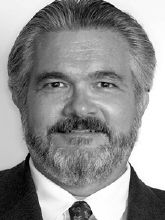In this issue of JCO, we present the third and final installment of our series on the 2015 JCO Orthodontic Practice Study. It seems fitting, as I write this during the holiday season, to proclaim some glad tidings. The good news is a marked rise in the percentages of practices reporting increases in both case starts and gross income compared to the previous year - even higher than respondents to the 2013 Study had predicted, reaching a level of growth we have not seen since the 2001 Study.
I can still recall the 2010 AAO Annual Session, when I presented, with a great deal of trepidation, the results of the survey we conducted at the bottom of the abysmal recession that plagued the latter half of this century's first decade. At that time, income figures were down, case starts were down, overhead rates were up, and the overall mood of the considerable audience was a combination of intense depression and simmering anger. Whenever I make a public presentation, I hope to leave my listeners in a happier mood than when they arrived. This audience, for the most part, was cordial, but clearly unhappy - not at the quality of my presentation, but at its message. I couldn't help but feel a bit of concern about a sentiment that might lean toward hanging the messenger. I'm sure that if I had been able to present the results of our 2015 Study instead, the audience would have been much more satisfied with my address.
Similar articles from the archive:
- THE EDITOR'S CORNER Practice Growth and the Future January 2014
- THE EDITOR'S CORNER 2011 JCO Orthodontic Practice Study October 2011
- THE EDITOR'S CORNER The Economic Outlook December 2009
Although the uptick we report in case starts and gross income is undoubtedly reflective of the overall U.S. economy, the growth of the orthodontic sector appears to have outpaced that of the country as a whole. Indeed, for the first time since our 2007 Study, local economic conditions were not ranked as the most influential negative factor by respondents who had fewer case starts than in the previous year. The mean impact ratings of competitive factors such as general dentists doing orthodontics were about the same as in the 2013 survey, while declining numbers of children in the patient pool remained less worrisome. Given these concerns regarding increased competition, especially with more GPs doing both conventional orthodontics and Invisalign, how can we explain why most respondents are raising their case starts and gross income? I believe at least some of the reasons may be found in our other survey data.
For one thing, the implementation of a sound management and marketing strategy is clearly associated with economic performance and growth. To illustrate my point, Table 31 lists the variables that showed a positive relationship with new patient consultations, traditionally a measure of practice viability. In statistics, a "positive relationship" between two variables, x and y, means that as x goes up, y goes up; as x goes down, y goes down. In this table, as in surveys past, the utilization of a full-time new-patient coordinator was significantly associated with higher numbers of new patient consultations. If you make attracting and catering to new patients someone's full-time job, that person is more than likely going to put a strong effort into the task. Similarly, "measurement of staff productivity" is significantly correlated with new patient consultations. It seems almost a given that any practice owner (or any employer, for that matter) would try to measure staff productivity, but such is not the case. It surprises me how many orthodontists simply assume that every one of their employees is being productive, when that is often an incorrect assumption. As another example, customer satisfaction surveys are commonplace in today's business environment. I can't get a haircut or an oil change without receiving an e-mail asking me to "take a brief survey" to assess my satisfaction with the experience. The use of patient satisfaction surveys also showed a significant positive association with new patient consultations - proving that sound practices hold true for all types of businesses, from barbershops to service stations to orthodontic offices. Both this table and Table 32, which shows variables with statistically significant relationships to overhead rate, provide many examples of just how much the implementation of proven business methods can improve the economic success of orthodontic practices.
Overall, the three sections of the 2015 JCO Orthodontic Practice Study deliver a much more encouraging message than could be found in our surveys of five to 10 years ago. The practice of orthodontics obviously remains a highly attractive business opportunity, as well as an excellent career choice for someone just starting out in the profession.
RGK


